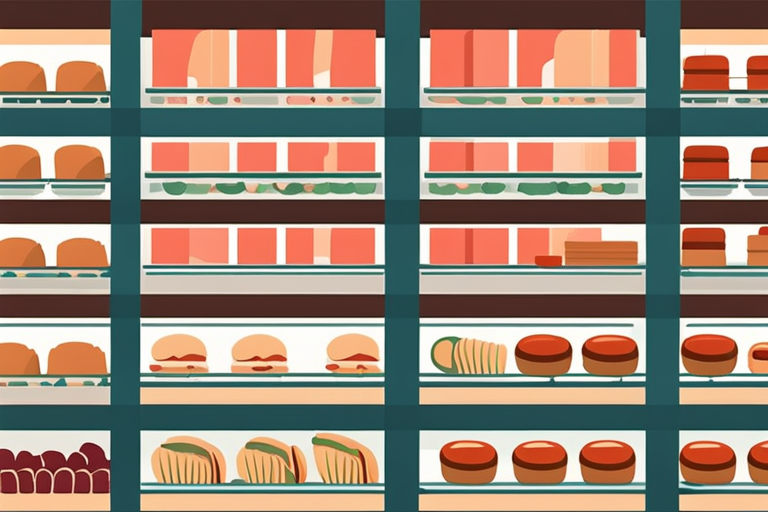
Meat Sell-By Date: Understanding Food Safety and Storage
Get Your Free Food Safety Cheat Sheet
30 most common foods with instant answers. Print it and stick it on your fridge—completely free!
Meat Sell-By Date: Understanding Food Safety and Storage
In the world of meat consumption, understanding sell-by dates is crucial for maintaining food safety and preventing foodborne illnesses. Whether you're purchasing fresh meat from the grocery store or have leftovers in your fridge, knowing how to interpret and adhere to sell-by dates can help you make informed decisions about the quality and safety of your meat products. In this blog post, we will delve into the significance of meat sell-by dates, how to properly store meat, and essential food safety tips to keep in mind.
What is a Sell-By Date?
Sell-by dates, also known as expiration dates, are guidelines provided by manufacturers and retailers to indicate the recommended date by which a product should be sold or consumed for optimal quality. It is important to note that sell-by dates are not hard and fast rules for food safety but rather suggestions for peak freshness.
Understanding Sell-By Dates:
- Sell-by dates are typically found on the packaging of meat products.
- These dates indicate the last day the product should be sold by the retailer.
- They are not always indicative of the safety of the product but rather its quality.
Importance of Proper Meat Storage
Proper storage of meat is essential to maintain its freshness, flavor, and safety. Improper storage can lead to bacterial growth, spoilage, and potential foodborne illnesses. Here are some crucial tips for storing meat safely:
Refrigeration:
- Store fresh meat in the coldest part of the refrigerator (usually the bottom shelf).
- Keep meat products wrapped securely to prevent cross-contamination.
- Use a refrigerator thermometer to ensure the temperature stays below 40°F (4°C).
Freezing:
- If you are not planning to consume meat before the sell-by date, consider freezing it.
- Use airtight containers or freezer bags to prevent freezer burn.
- Label packages with the date of freezing for easy identification.
Food Safety Tips for Handling Meat
Ensuring food safety when handling meat is paramount to prevent the spread of harmful bacteria and pathogens. Here are some essential food safety tips to keep in mind:
Thawing:
- Thaw frozen meat in the refrigerator, microwave, or cold water (never at room temperature).
- Avoid refreezing meat once it has been thawed.
Cooking:
- Cook meat to the recommended internal temperature to kill harmful bacteria.
- Use a food thermometer to ensure meat reaches the appropriate temperature.
- Do not partially cook meat and finish cooking it later.
Leftovers:
- Refrigerate leftover cooked meat within two hours of cooking.
- Consume leftovers within 3-4 days or freeze them for longer storage.
Conclusion
Understanding sell-by dates, proper meat storage, and food safety practices are essential components of maintaining a healthy and safe diet. By following these guidelines, you can minimize the risk of foodborne illnesses and enjoy your meat products with confidence. Remember, when in doubt, it's always better to err on the side of caution when it comes to food safety.
For more information on food safety and storage, check out the resources provided by the United States Department of Agriculture (USDA) and the Food and Drug Administration (FDA). Stay informed, stay safe, and savor every bite of your meals!

Authoritative Food Safety References
These agencies and university labs inform every tip and health precaution we publish.
USDA FoodKeeper – Cold Storage Guidelines
Official refrigerator, freezer, and pantry timelines maintained by the U.S. Department of Agriculture.
Visit USDA FoodKeeperFDA Produce Safety Rule & Grower Guidance
Field-to-fridge handling practices that prevent contamination of fruits, vegetables, and leafy greens.
Visit FDA Produce SafetyCDC Foodborne Illness Prevention Hub
Surveillance-backed guidance on pathogens, symptoms, and steps to reduce foodborne illness risk.
Visit CDC Food SafetyUC Davis Postharvest Technology Center
University research detailing optimal storage atmospheres for produce after harvest.
Visit UC Davis PostharvestPenn State Extension – Home Food Preservation & Safety
Peer-reviewed extension bulletins on safe canning, chilling, and reheating practices.
Visit Penn State ExtensionCan I eat meat after the sell-by date has passed?
How should I store meat to ensure food safety?
What are the signs that meat has gone bad?
How long can I safely keep meat in the refrigerator?
Get Your Free Food Safety Cheat Sheet
30 most common foods with instant answers. Print it and stick it on your fridge—completely free! Want more? Upgrade to the complete guide with 70+ foods.
Scan your food directly and get instant safety info using our AI-powered camera feature.